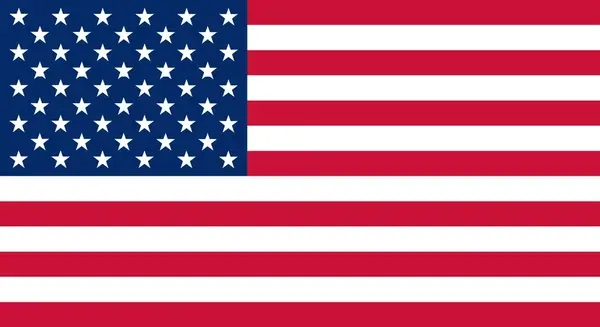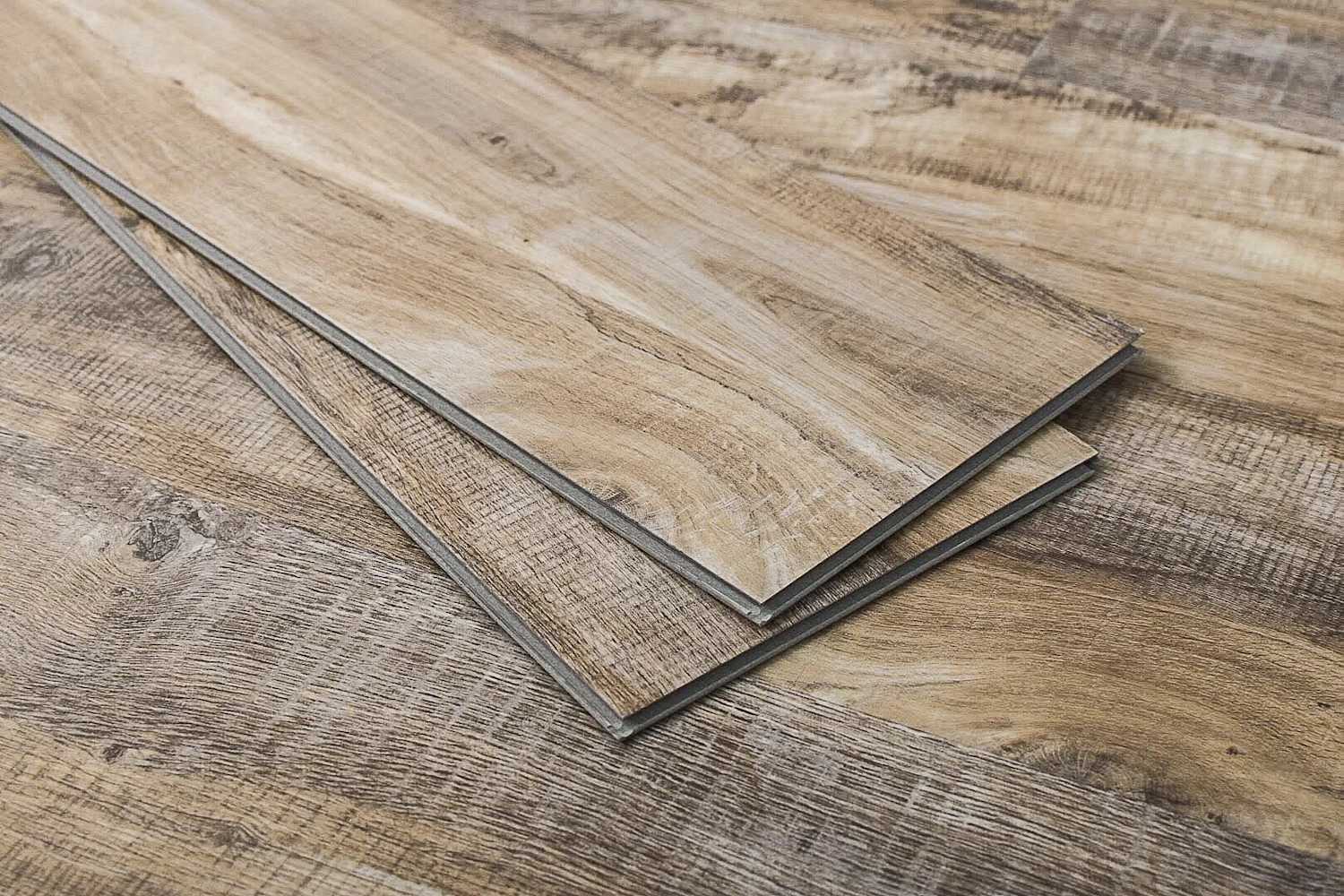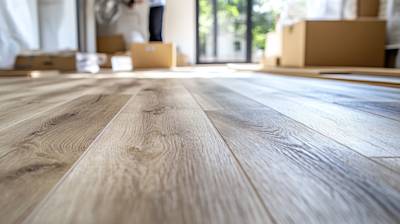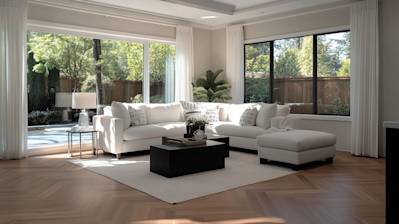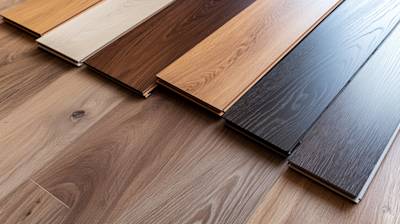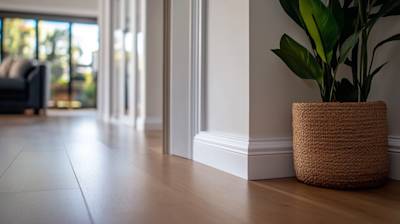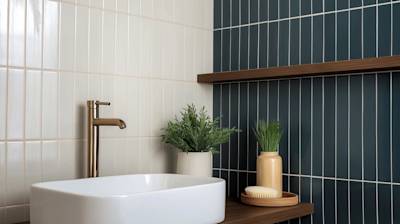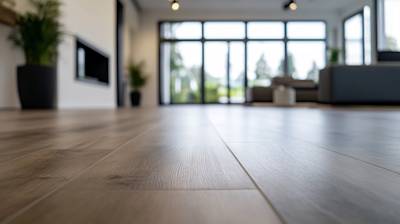When it comes to re-flooring your home, luxury vinyl flooring is one of the top contenders. It’s affordable, durable, and comes in an array of designs to mimic almost any natural material. But choosing the right type can be tricky, especially if you’re torn between Luxury Vinyl Tile (LVT) and Luxury Vinyl Plank (LVP). Let’s delve deeper into the world of vinyl flooring to better understand the difference between LVT and LVP.
A Deep Dive into Luxury Vinyl Tile (LVT)
LVT is designed to closely mimic tile and stone features such as marble, slate, and ceramic tile. Through advanced printing technology, it captures the authenticity of these materials, including the intricate details, textures, and patterns. Unlike real stone or ceramic tile though, LVT is much warmer and softer underfoot. This makes it surprisingly comfortable to walk on and also reduces noise.
Installation Process of LVT
LVT comes in different installation options including glue-down, interlocking and loose lay. The choice of installation process depends on your personal preference, the nature of the floor sub-surface and the size of the area on which it’s being installed.
Durability & Maintenance of LVT
The durability and maintenance of LVT is one of its key selling points. Most LVT has a protective layer on the top surface that makes it resistant to scratches, stains and water. Consequently, it’s relatively easy to clean, requiring only routine sweeping and mopping to keep its appearance.
Understanding Luxury Vinyl Plank (LVP)
LVP, on the other hand, is designed to mimic natural hardwood. It displays the patterns, knots, and grains that you would find in real wood. This makes LVP a popular choice for those who love the look of hardwood flooring but don’t want the associated up-keep or cost.
Installation Process of LVP
LVP is often easier to install than LVT, especially if opting for a glue-free, click-and-lock design. This system allows for the individual planks to be clicked into place, with no need for adhesive or nails. It’s often a faster, less messy installation project than LVT.
Durability & Maintenance of LVP
Like LVT, LVP also boasts of a high durability factor. It stands up well to scratches, dents and water making it a good option for houses with pets or children. Furthermore, maintaining LVP is a breeze - a quick sweep and mop is all it generally needs to keep it looking great.
Determining the Differences: LVT vs LVP
Though LVT and LVP are similar in many aspects including their durability, ease of maintenance, and large variety of option, there are still some distinct differences:
- Design Aesthetic: LVT emulates the look of tile or stone, while LVP gives you the appearance of natural wood.
- Installation: While both offer a variety of installation methods, LVP is often seen as more user-friendly, especially with click-and-lock designs.
- Comfort: Both offer a more comfortable underfoot experience than natural materials, but the degree of comfort may vary depending on the specific product and layer thickness.
Choosing the Right Choice for Your Home
Ultimately, the choice between Luxury Vinyl Tile (LVT) and Luxury Vinyl Plank (LVP) comes down to your aesthetic preference and specific needs of the room. Take into consideration where you’ll be installing it, what kind of look you’re after, your budget, and your lifestyle when making the selection. Whether you choose LVT or LVP, you can be confident that you’re selecting a product that’s durable, affordable, and available in a wide array of designs.
Frequently Asked Questions About LVT vs LVP
What exactly are LVT and LVP?
LVT stands for Luxury Vinyl Tiles and LVP is short for Luxury Vinyl Planks. Both are types of vinyl flooring, known for their durability, various styles and affordability. These flooring options enable homeowners to have the look of hardwood or stone floors without the high cost and maintenance.
How does the durability of LVT and LVP compare?
Both LVT and LVP are highly durable flooring options, capable of withstanding high traffic, pets, and children. They're both resistant to dents, scratches, and stains, making them ideal for busy households. However, LVT may be slightly more prone to damage when super heavy objects are dropped on it, while LVP usually has a tougher wear layer and may be more resilient in such situations.
What about the installation process of LVT versus LVP?
The installation process for both LVT and LVP is relatively easy, especially if you choose products with a click-lock installation system. This system allows the planks or tiles to simply click into place, avoiding the need for adhesives. Generally speaking, because LVP tends to be longer and wider than LVT, it might be a slightly faster install whereas LVT, being smaller, may offer more flexibility in design.
Can LVT and LVP be used in wet areas?
Yes, both LVT and LVP are waterproof, making them appropriate choices for areas that may get wet often, like bathrooms or kitchens. However, while they're resistant to water on the surface, they shouldn't be submerged for prolonged periods as the water can seep through the edges or cracks.
Is there a significant price difference between LVT and LVP?
They are nearly identical in cost. The price could vary based on the brand, quality, thickness and design of the particular LVT or LVP you choose. Typically, however, you can expect to pay a similar price for both types of flooring.
Do LVT and LVP look similar?
Since both LVT and LVP are types of vinyl flooring, they can look similar. They both can effectively mimic the look of natural materials like wood or stone. However, LVP is designed to look like hardwood planks while LVT often resembles stone or ceramic tiles. The actual look will depend greatly on the design options from the specific brand and line you choose.
How are LVT and LVP in terms of maintenance?
LVT and LVP flooring are both relatively low-maintenance. Regular sweeping and occasional mopping with a damp (not wet) mop should suffice for keeping these floors clean. They don't require waxing or any special treatments. However, it is recommended to use placemats under heavy furniture to prevent any possible denting.
Are there specific warranty differences between LVT and LVP?
Warranty details will often depend on the manufacturer rather than the type of flooring. Both LVT and LVP floors usually come with a warranty, but details concerning the length of coverage and what exactly is covered could differ from one brand to another. Always check the warranty details before purchasing.
Pros and Cons of Luxury Vinyl Tile (LVT) vs. Luxury Vinyl Plank (LVP)
In comparing LVT and LVP, both serve as excellent flooring options, but with their unique features and benefits, they cater to different needs. Here, we look into their individual advantages and disadvantages, providing a comprehensive comparison of LVT vs LVP.
The Pros of Luxury Vinyl Tile (LVT)
Design Flexibility
- One of the significant advantages of LVT is its design versatility. It can mimic the appearance of natural stone, ceramic, and even hardwood, offering a range of aesthetic possibilities.
- Furthermore, LVT comes in various sizes, shapes, and colors, providing endless customization options to fit all interior styles and personal preferences.
Durability
- LVT is incredibly durable. It is resistant to scratches, dents, and other forms of damage, making it an ideal choice for areas with high foot traffic.
- This flooring option also promises a high level of water resistance, perfect for kitchens, bathrooms, or spaces prone to moisture and spillages.
Maintenance
- Another pro is the low maintenance feature of LVT. It does not require waxing, polishing, or other intensive care. Regular sweeping and mopping are usually enough to keep it looking new.
The Cons of Luxury Vinyl Tile (LVT)
Cost
- LVT tends to be more costly compared to other types of vinyl flooring due to its superior durability and design flexibility. However, it offers considerable long-term value, making it a worthy investment for many homeowners.
Installation
- While LVT installation can be a DIY project, it might require professional help for those with little to no experience in home improvement. This fact can add to the overall cost of LVT flooring.
The Pros of Luxury Vinyl Plank (LVP)
Realistic Wood Look
- LVP is best known for its ability to replicate the look and feel of natural hardwood. It can mimic various species of wood, offering an elegant and inviting aesthetic to any space.
Durability and Water Resistance
- Just like LVT, LVP offers excellent durability. It withstands foot traffic, pet scratches, and heavy furniture without visible damage.
- Its water resistance makes it an excellent choice for wet areas like the bathroom and kitchen, or anywhere else in the house where water damage could be a concern.
The Cons of Luxury Vinyl Plank (LVP)
Possibility of Fading
- Over time, LVP might lose some of its color vibrancy due to constant exposure to sunlight, unlike the natural hardwood that it mimics.
Does Not Improve Property Value
- One major disadvantage is that, despite its hardwood-like appearance, LVP does not increase the value of a property in the same way real wood would. Most homebuyers still prefer authentic hardwood floors over vinyl options.
Non-Biodegradable
- Since LVP is made from synthetic materials, it is not eco-friendly and not easy to recycle. Those seeking a more sustainable flooring option may want to consider other alternatives.
Overall, both LVT and LVP have their unique strengths and weaknesses. The ultimate decision will largely depend on the specific styles, functions, and long-term value that homeowners are looking for in a flooring option.
Summary
Overall, choosing between LVT vs LVP ultimately boils down to personal preferences and specific requirements. LVT offers superior durability and realism, making it ideal for high-traffic commercial areas. On the other hand, LVP offers superior water resistance and comfort, which makes it an excellent choice for homes, especially in areas like bathrooms and kitchens. So, whether you require the practicality of waterproof flooring or the aesthetic charm of natural-looking designs, either of these flooring options could be the perfect solution.
It’s easy to see why the discussion of LVT vs LVP is a common one. Both are known for their affordability, durability, and wide range of stylish options. LVT stands out for its natural texture and detailed design while LVP triumphs in the area of water resistance. Every home is unique and every homeowner has different needs and style preferences. Therefore, the final decision should be based on your personal criteria, including your lifestyle, budget, and home decor sense.
When you compare LVT vs LVP, you realize that both types of flooring offer great advantages. LVT flooring is appreciated for its realistic design and solid wear layer, whereas LVP flooring is loved for its waterproof quality and comfort underfoot. The choice between these two will depend on your priorities, whether that's the realistic feel of the flooring, the ability to handle water, or comfort. And no matter which you choose, both of these options are budget-friendly and easy to maintain, making them both winners in their own right.
About Solid Construction & Design
Say hello to Solid Construction & Design, your trusted partner in Sacramento, CA offering top-quality construction and design solutions. From humble beginnings to being an eminent fixture in the Sacramento building scene, we've built our reputation on unwavering commitment, expert craftsmanship and exceptional customer service. Whether you're looking to upgrade your kitchen, remodel your bathroom, or embark on a complete home renovation, our talented team has got you covered. Our philosophy? Transforming houses into dream homes, and making the process as enjoyable as possible. We're not just constructing buildings, we're solidifying lifelong relationships with our clients.
